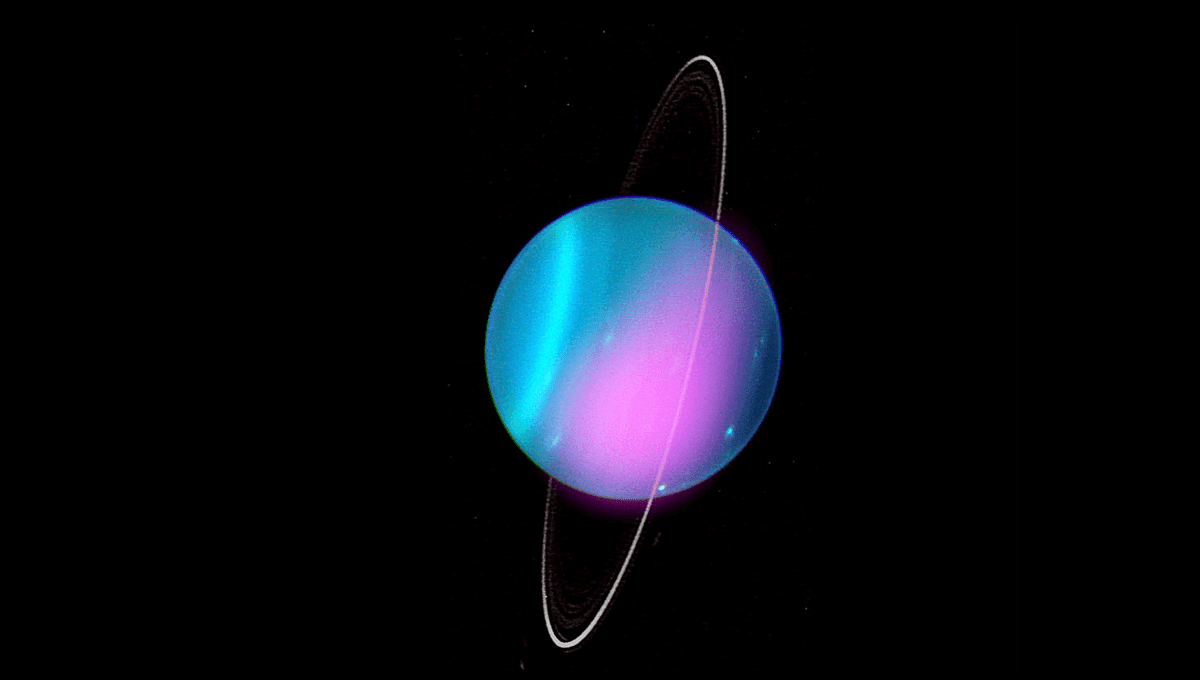
The time to launch a mission to Uranus is 2032, when spacecraft could get a boost from Jupiter on the way. If we’re going to do that we need to start planning – and seeking funds – now. In a new Perspective article, planetary scientist Dr Kathleen Mandt of the Southwest Research Institute makes the case we should do just that, but will all the sniggering get in the way?
The rocky planets of the inner Solar System have been visited by many missions, in Mars’ case from numerous nations. Jupiter has attracted the attention of nine and Saturn three, but Uranus and Neptune just one quick visit each, the same as non-planet Pluto. Even several asteroids have had more love.
Being so far away, it takes a lot of energy to get a spacecraft out to the ice giants in a reasonable amount of time, but that can be reduced dramatically by getting a gravity assist on the way. Even with 1970s technology, we managed to send Voyager 2 to both Uranus and Neptune by using a once-in-175-years alignment of the giant planets.
After that, things got harder, but the chance is coming around anew, with Jupiter and Uranus to align again, even if Saturn and Neptune won’t be so conveniently placed.
There are plenty of reasons to study Uranus. The similarities in size and chemistry between Uranus and Neptune suggest it could be a representative of a common class of planets. As Mandt notes, its strange tilt – 98 degrees to its orbital plane – obscures investigation from Earth. The favored explanation for this tilt is a collision with a large object, but we probably won’t know until we can study the planet in depth, rather than the quick squizz-and-go that Voyager II gave it.
Visiting Uranus could also contribute to solving one of the great outstanding questions of the Solar System: where did the giant planets form and what path did they take to end up at their current locations? We’ll probably need an atmospheric probe to sample Uranus’s noble gas abundances and nitrogen ratios to resolve that.
In addition to the planet itself, a future mission will find itself with plenty else worth studying. After Saturn, Uranus has the best set of rings in the Solar System, which are puzzlingly dark in color. Although it has no large moons, it does have 27 known medium-sized and small satellites. As Enceladus has shown, even a modest-sized moon can be fascinating if in the right location, and four of those orbiting Uranus are larger than that. Voyager II spotted signs of geologically-induced resurfacing on the five largest moons’ southern hemispheres.
None of those things are as strange as the Uranian magnetic field, which we don’t understand at all.
Mandt argues she is not a voice crying in the wilderness. The 2022 planetary science decadal survey (known as Origins, Worlds and Life) identified the “dearth of knowledge on the ice giants” as the highest priority to address in our investigations of the Solar System’s other planets.
Mandt also argues for more long-term work to begin towards a follow-up mission to Neptune, presumably to be launched to meet its own Jupiter window in 2041. The two missions could save money by using copies of the same equipment.
Mandt uses the current name of Uranus Orbiter and Probe (UOP), which seems a much better approach than asking the Internet, as promoters of the mission unwisely did last year.
Maybe it would have been best for science, if not for comedians, if William Herschel had stuck with his original plan to call the planet he had discovered George, instead.
Mandt’s Perspective can be read in Science.
Source Link: Why Planetary Scientists Think It's Time For NASA To Probe Uranus